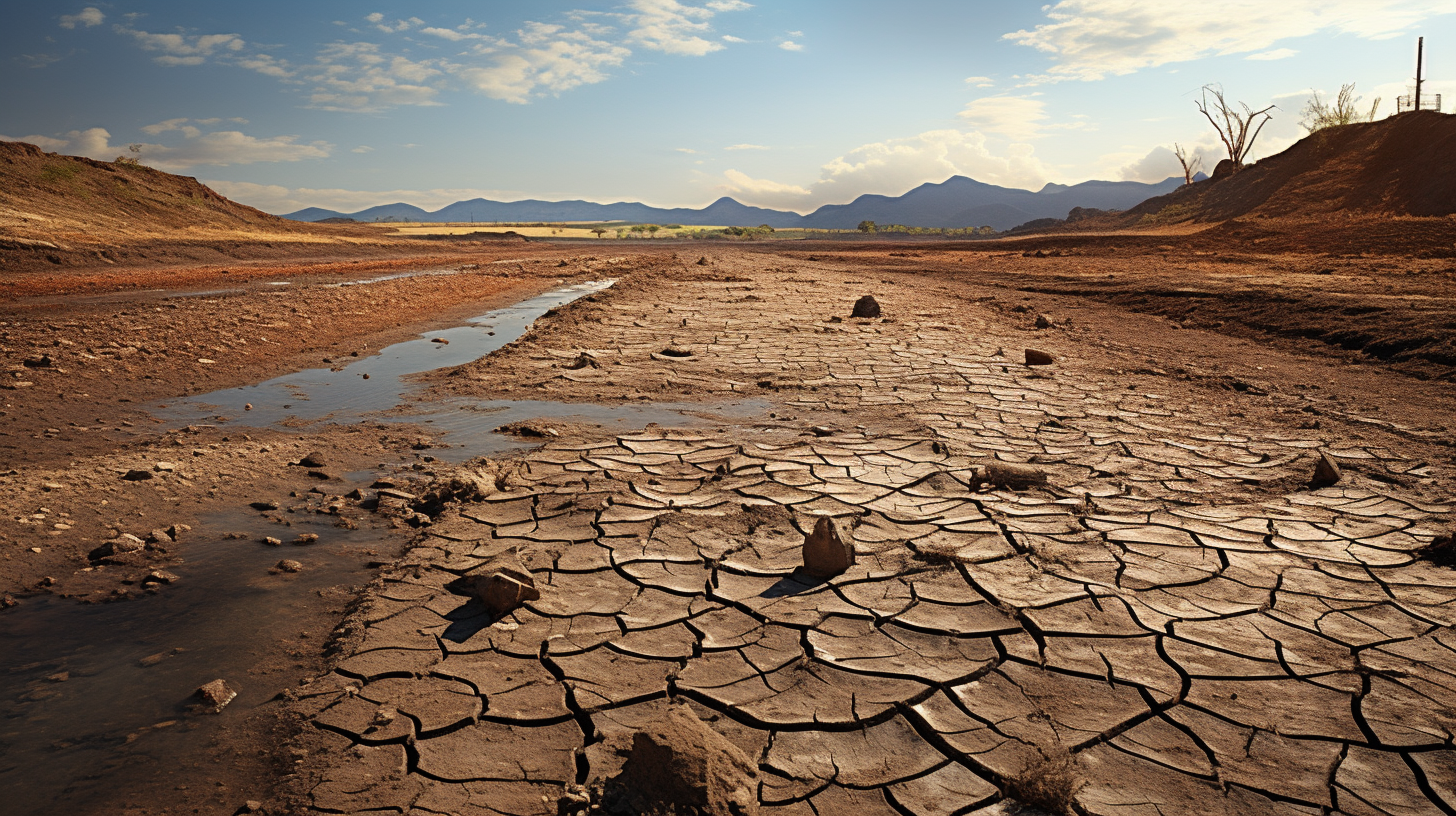In a world where the skies are a perpetual dusty red, and the lands are eternally parched, we have become akin to diviners, dowsing for a hint of moisture beneath the surface. Our ‘Invisible Rivers – The Drought Underground’ is an exploration into the realm of aquifers, those underground bastions of freshwater that once silently supported the ecosystem from beneath the soil’s crust.
Imagine colossal, life-sustaining rivers flowing invisibly beneath our feet. Yet, in our harrowed world, they have become as elusive as the morning dew in the desert – the subterranean streams are now victims of relentless over-pumping and contamination, leading to a precarious existence that mirrors that of their aboveground siblings.
As the surface waters receded, humanity’s dependence on these underground channels increased exponentially, painting a cataclysmic picture of our once fertile Earth. The Aquifer Depletion Phenomenon, as scholars call it, is nothing short of a ticking time bomb.
The famed Ogallala Aquifer, a lifeline for America’s breadbasket, has seen levels drop so dramatically that entire sections are now waterless tombs. Farmers bound to the soil face a grim irony: they are sowing seeds into a barren womb, bereft of its life-giving amniotic fluid.
In other regions, the loss is equally devastating. The ancient Saharan aquifers – a paradoxical reservoir under the world’s most iconic desert – are now as endangered as the wildlife they once clandestinely nurtured. Their depletion points to a haunting reality: our historical memory is longer than our groundwater’s lifespan.
The catastrophic impact of this loss on agriculture, ecosystems, and human settlements conveys a message of irrevocable change. Our thirst for ‘modern’ life has blinded us to the finity of our resources. Our drills and pumps, once symbols of progress, have morphed into straws sucking the last gulps of life from Earth’s fragile underground veins.
‘Hydrosorrows’, a term once reserved for ecologists and water-guardians, has entered common parlance, a dark vernacular for the mourning of our aqueous arteries. Yet, some continue to live in denial, taking solace in technological marvels like air-generated water, a mirage of abundance in a desiccated landscape.
We navigate a fine line between the science of hydrogeology and the mythology of solace, as we inject ‘water banks’ into the ground in hopes of reviving the desiccated heart of our planet. The knowledge of what lies beneath emboldens a few, igniting quests fueled by greed – those who seek to siphon the last remnants or those who peddle the myth of an inexhaustible supply to the highest bidder.
Art offers a glimpse into the tortured psyche of our time – films, holograms, and virtual experiences that traverse the arid landscapes. We drink from the cup of escapism, retreating into tales of watery abundance to soothe the parched throats of our reality.
Our narrative wades through the dust-laden histories of civilizations that rose and fell on the tide of their aquifers. From the Fertile Crescent to the Great Indus, water whispered the secrets of abundance, and now, in its absence, it hisses a cautionary tale of ruin.
As we clutch at the straws of hope, incongruous as it may seem in our stark publication, it is in the is in the power of raising awareness and igniting change that we find a catalyst. Will humanity listen to the stories whispering from the cracks in the ground? Will we chart a new course, or will we continue the march in the death parade of civilizations that ignored the silent screams of their own making?
Our report, while a chronicle of present-day agony, serves to remind readers that action is not a choice but a necessity compelled by the earth’s desperate pleas for conservation and respect. As the underground rivers fade into myth, there can be no new beginnings from the dry wells of oblivion.
